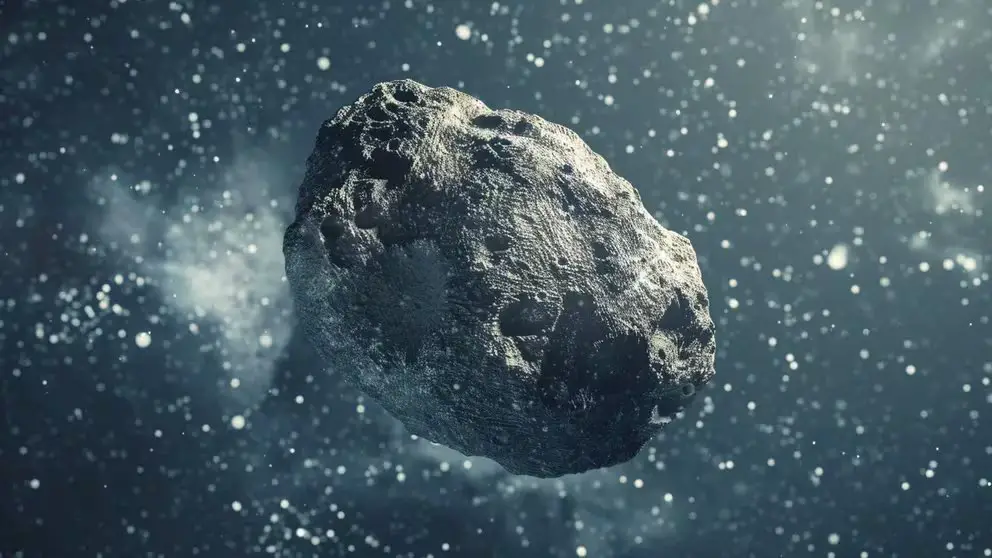Table of Contents

Introduction
- In an intriguing celestial event from September 29 to November 25, 2024, Earth will briefly gain a temporary companion A Hypersensitive On-line Instrument for the Clear detection of High- velocity Impactors 2024 PT5.
- This space rock of approximately 10 meters (33 feet) will remain close to our Earth for about 1. 5 months and is particularly called a mini-moon.
- However, unlike our regular Moon that remains visible and can be observed by telescopes, this product of space rocks will not always be observable for it is relatively dim, too small for the naked eye and most amateurs’ telescopes.
- Although, 2024 PT5 is seen very briefly and is off the radar most of the time, it provides a wonderful window for researchers to observe NEOs and how they behave in response to Earth’s gravitational pull.
What Is a Mini-Moon?
- A mini-moon is small asteroid that is temporarily orbiting the Earth and has been trapped by Earth’s gravitational forces.
- Unlike Earth’s constant Moon which has been in orbit around our planet for billions of years, mini-moon lasts in orbit only for a few months and then back to outerspace.
- Mini-moons on the other hand,are not very large, they are at most several meters in diameter which makes them hard to be observed.
- On this score, Asteroid 2024 PT5 can be said to fit the description to a T. This asteroid measures about 10 meters hence falls under the mini-moons category since it will only orbit around the Earth before it will be pulled towards the sun by other forces.
- Mini-moons, in particular, give astronomers a unique opportunity to observe an object which becomes Earth’s second natural satellite for a certain period of time.
Characteristics of Asteroid 2024 PT5

- Asteroid 2024 PT5 was first discovered by NASA’s ATLAS program on August 7, 2024.
- It has a unique orbit compared with the majority of other NEOs on the earth.
- While it won’t make a conventional circular or elliptical orbit it will travel in a figures of eight pattern around the Earth over a period of two months.
- It is due to these interactions between the asteroid’s speed, earth gravity and the moon gravity that forms such an orbit.
- Specifically, objects such as 2024 PT5, mini-moons are part of the Arjuna asteroids.
- These are similar to Earth in their orbital characteristics and their paths normally are almost circular like that of the Earth in its orbit around the Sun.
- Because of their nearness, some of these asteroids may become captured by the Earth’s gravity and hence become temporary natural satellites.
- While its presence will be temporary, asteroid 2024 PT5 will display behavior that makes it a perfect candidate to study.
- The path it took and how it interfaced with the gravity of Earth may be useful to scientists as might help them update their forecasts concerning further NEOs.
- This may go a long way in influencing planetary defense since knowing the track of such asteroids is essential in a bid to shield the earth from possible impacts.
Why Are Mini-Moons Important?
- However, it is much more than recognising the mini-moons as the temporary second satellite of Earth.
- Mini-moons also offer scientists from the field of astronomy and planetary science a good chance to learn how the asteroids behave when they are near Earth.
- This knowledge contributes in enhancing our knowledge of the several forces of gravitation between the Earth, the moon and these small visitors from space.
- From the given NEOs, Asteroid 2024 PT5 provides a look at how small NEOs act when they are captured by Earth’s gravity.
- Using some of the data gained, the scientists can measure its speed, its direction and its ultimate flight from the earth’s gravity and using all these inferences made towards improving the models that predict the motion of other asteroids.
- As some NEOs embody certain threat to the Earth people increase the efficiency of these predictions to protect the planet.
- Furthermore, mini-moons also help the scientists with the understanding of the material composition and the structure of small space objects such as asteroids.
- Even though the major goal of asteroid missions is the large asteroid, mini-moons are much closer to our reach since they are mostly tiny spacecraft sized Asteroids located relatively close to Earth.
- In the future, space missions may be directed to the mini-moons with an aim of collecting samples that would provide researchers with better understanding of the initial epochs of forming the solar system and the materials that constitute planets.
The Scientific Importance of Asteroid 2024 PT5
- The scientific importance of asteroid 2024 PT5 can be summed up by the following points.
- Scientists will keenly observe Asteroid 2024 PT5 especially those who have keen interest in the dynamical properties of NEOs.
- Among the points that will be of major focus will be how the asteroid behaves when it is affected by Earth’s gravitational pull.
- Based on the analysis of its orbit and its trajectory after it left Earth, scientists can get a better understanding of asteroid movement and presumably, when the next similar NEOs will be, and where it will be flying.
- Another factor that could be investigated is the matter of which the asteroid is made of. Currently, asteroid 2024 PT5 is too faint and is located too far to be directly discernible with most telescopes, but science-class telescopes on space-based observatories may be able to obtain information on its composition.
- All this information can be invaluable by scientists to improve the knowledge of the variety of objects located in asteroid belt and further.
- Furthermore, since 2024 PT5 orbit is horseshoe shaped the motion of such small asteroid seems to be affected by gravitational forces of Earth and the Moon.
- The information that is gathered during the short time of asteroid 2024 PT5’s time may also be of use for those space missions of the future.
- Due to their proximity, low albedo and near-actual size Mini-moons such as 2024 PT5 are suitable target candidates for sample-return missions.
- Studying 2024 PT5 gives scientists a glimpse into what can be expected on further fly-by of such objects which may contain scientific data or even resources for future space missions.
Historical Context of Mini-Moons
- The year 2024 PT5 is not the first size of a mini-moon to orbit around the earth; it will not be the last either.
- Small Asteroids: Before the appearance of Apophis, Earth has captured it several times in its gravitational field though some of them has existed for few months while others have remained for a year and more.
- Another famous mini-moon is called 2006 RH120 which was mini-moon of the Earth during July 2006 – July 2007, before escaping the earth’s gravity.
- Another example is the celestial body number 2022 NX1 that temporarily was a part of Earth’s gravity field in 1981 and in 2022.
- These occurrences prove that Earth sometimes acquires small space ‘orphanage’ passengers that act as natural small satellites for sometimes before they are set free again.
- Such mini-moons similar to 2024 PT5 are not so frequent but not surprising either. Every time Earth is successful in catching one, it provides researchers with the possibility to get a closer look at such small objects.
- These events also reveal one more aspect of our planet’s gravity, and although scarce it occurs when our planet manages to ‘capture’ small asteroids for a short amount of time.
Can We See Asteroid 2024 PT5?
- Although it will prove to be what we refer to as a ‘mini-moon,’ asteroid 2024 PT5 is going to be extremely challenging to view.
- At a brightness magnitude of 22, it will be difficult for anyone to see it with the naked eye or even with most of the everyday use telescopes.
- In fact, the existence of the object will only be discernible to leading observatories with sensitive apparatus and sensing tools.
- For most of the people, 2024 PT5 asteroid will be an unseen but a constant friend and associate, which does not manifest itself in any way.
- Nonetheless, despite the fact that its density means you won’t be able to see much of it, this discovery will make a huge leap forward in the field of science.
- The data collected by professional astronomers during its stay shall contribute to our current knowledge of NEOs, including their relation with Earth’s gravity.
Conclusion
- The recent experience with Asteroid 2024 PT5 as a mini-moon is still interesting to remind everyone that the solar system is dynamic.
- Although this may be well hidden to the general society, it provides a platform for scientific analysis of small-sized asteroids and NEOs’ movements.
- Mini-moons as brief as they are are an evidence of activity of Earth and objects which share its orbit.
FAQs
Q1: What is asteroid 2024 PT5?
Ans: Asteroid 2024 PT5 is a small asteroid, approximately 10 meters (33 feet) in size, that will briefly orbit Earth as a temporary mini-moon from September 29 to November 25, 2024. It was discovered by NASA’s ATLAS program on August 7, 2024.
Q2: What is a mini-moon?
Ans: A mini-moon is a small asteroid temporarily captured by Earth’s gravitational field. Unlike Earth’s permanent Moon, these mini-moons stay in orbit for a short period—usually a few months—before escaping back into space. Mini-moons are typically only a few meters in diameter and are difficult to observe due to their small size and faintness.
Q3: How long will asteroid 2024 PT5 orbit Earth?
Ans: Asteroid 2024 PT5 will orbit Earth for roughly two months, from late September to late November 2024. After that, it will break free from Earth’s gravity and continue its journey through space.
Q4: How big is asteroid 2024 PT5?
Ans: Asteroid 2024 PT5 is about 10 meters (33 feet) in diameter, which makes it relatively small compared to other near-Earth objects.
Fantastic beat I would like to apprentice while you amend your web site how could i subscribe for a blog site The account helped me a acceptable deal I had been a little bit acquainted of this your broadcast offered bright clear concept
I don’t think the title of your article matches the content lol. Just kidding, mainly because I had some doubts after reading the article. https://www.binance.com/join?ref=P9L9FQKY
Thanks for sharing. I read many of your blog posts, cool, your blog is very good.
Thanks for sharing. I read many of your blog posts, cool, your blog is very good.
Your point of view caught my eye and was very interesting. Thanks. I have a question for you.
Thank you for your sharing. I am worried that I lack creative ideas. It is your article that makes me full of hope. Thank you. But, I have a question, can you help me?
Thanks for sharing. I read many of your blog posts, cool, your blog is very good.